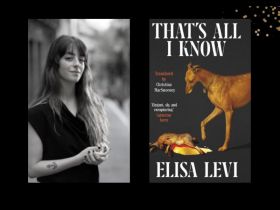The word “strategy” makes me think of things like big businesses, governments or even leaders in the military. In other words, large-scale, and not really something for regular people like me (and probably you) to think about.
But, as Tim Walker explained to me, this couldn’t be further from the truth. In fact, everyone should have a strategy – whether you’re a CEO of a multibillion-dollar company, or a young artist scraping together a living, or someone in between.
Tim should know, too. He worked in senior roles at museums like Te Papa for decades, and now he works as a consultant for arts organisations. He is also a mentor on The Big Idea mentoring program. These jobs are all about strategy – setting it, tweaking it, making sure it gets done.
So I posed a few questions to Tim about how artists can use a strategy to build their careers.
What is strategy anyway?
Let’s start with the basics, though. Strategy is about looking at why you do what you do, in terms of the impact you want to have. This is significantly different from the day-to-day of what you do. For example, if you were a painter, the “what” would be painting. The “why” is much bigger than that – and it’s up to you to decide what it is.
It can be as simple as a sentence or so. You might want to make a living, or you might want to make people think about a particular aspect of themselves, or it might be something completely different. It’s entirely up to you.
But it’s important to think about this because then you can use it to define what kind of decisions you make over the next five, ten or more years. Focussing on the “what” doesn’t achieve this, because the world will change over the next few years – it will probably change over the next few months! The mediums and tools available to you will change, peoples’ preferences will change, and even the demographic makeup of society will change. Your practice will necessarily need to evolve with these changes. Having a clear sense of purpose can help you choose which direction you evolve in, and how you do so.
Following a strategy
That all sounds great – but the devil, as always, is in the details. It’s very nice to have an overall purpose, but that purpose needs to connect to the work you do every day. Otherwise, it’s just words.
Tim’s advice is to use your strategy to create an idea of where you’d like to be in five years. Five years is a fair while away, so your goal can be pretty ambitious. From here, you can start thinking back. If you want to be doing one thing or the other in five years, what do you need to be doing before that? For example, if you want to have your work displayed in a major gallery, you’re probably going to have to have your work displayed in lots of minor galleries before that. That in turn means you need to be producing enough work to get into those galleries – and so on, and so forth.
Follow this thread all the way down, until you’re down to next month. This gives you a clear road map of what you need to do each month – and also makes all the steps manageable. There’s another benefit to this as well: Tim says that ‘when we do this kind of thinking, we end up moving the five year target to three years’.
In other words, once you break down your five-year goal (which may seem insurmountable), you may realise that it’s actually a three-year goal. This in turn means that you may be able to achieve even more in five years!
The day-to-day
So now you have a plan. From here, it’s just a matter of doing the work. Easier said than done, of course. But you’re probably doing things on a day-to-day basis anyway, so functionally, there won’t be a huge change. The big change will be in the kind of work you do – which opportunities you pursue, which opportunities you turn down, and who you network with. Once you have a strategy, you can make sure each of the day-to-day things you do is in line with this strategy – and is therefore contributing as much as it possibly can to your development and your career.
What’s your career strategy?
This article originally appeared on The Big Idea NZ and is republished with permission. Read the original article.





